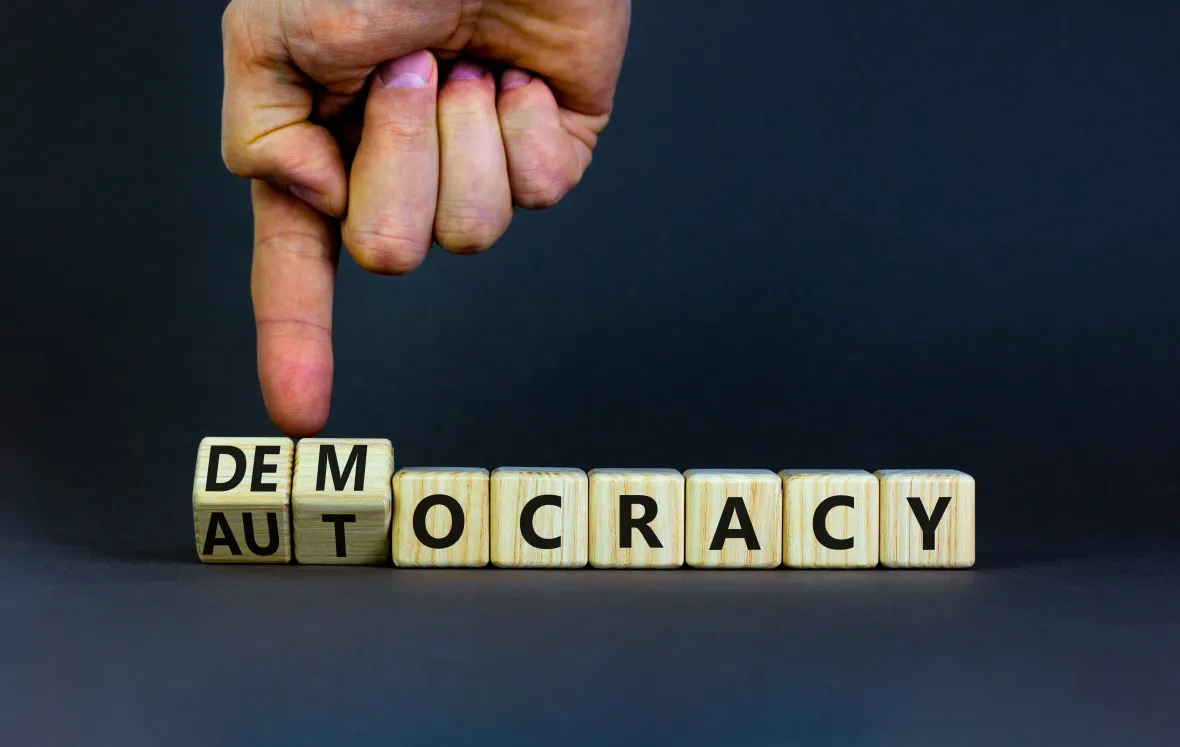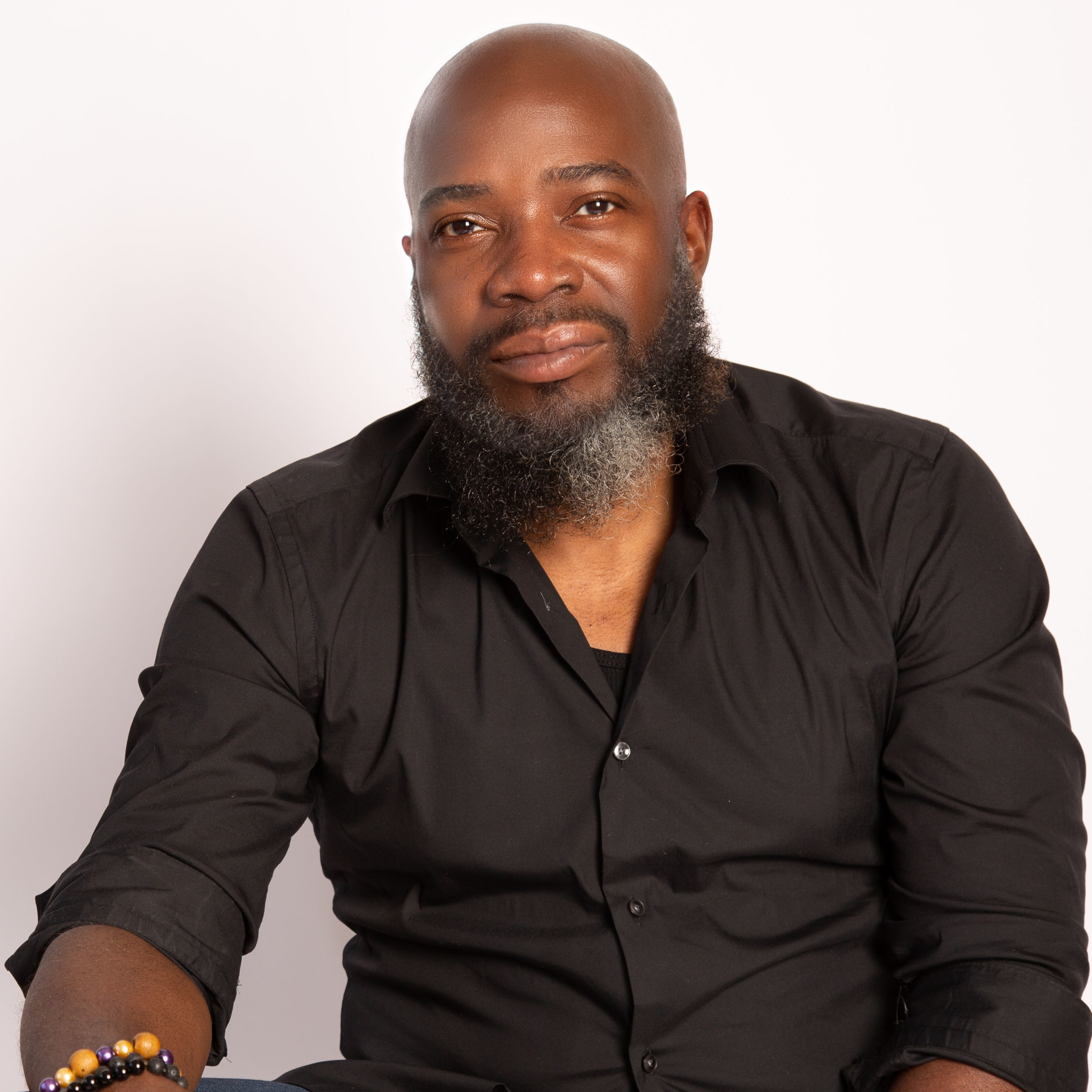Can one election end democracy? It actually happened once.

OPINION: How a violent insurrection, a fake slate of electors and a right-wing “stop-the-steal” movement overturned an election and led to the end of American democracy.
Insurrection: An act or instance of revolting against civil authority or an established government.”
According to the New York Times, the Jan. 6, 2021 revolt against Congress’ civil authority was just a “riot.” The Associated Press describes the attempt to stop a constitutionally established act of the government as an “attack on the Capitol.” Fox News prefers to call it a “protest.” To be fair, these fine upstanding institutions are practicing a longstanding rule of journalism:
White people can’t be insurrectionists.
Perhaps you think President Joe Biden was being hyperbolic when he called Donald Trump a “genuine threat to our democracy.” Vice President Kamala Harris might seem a little sensational when she tweeted: “Our Democracy is on the ballot.” Even if you trust the institutions Trump called “the enemies of the people,” you still might have questions.
First of all, is America really a democracy? How can a single election pose a “threat to our” system of government? For most of this country’s history, participating in “our democracy” was restricted to white men, so who the hell is “our”? More importantly, even if this so-called democracy actually exists, how could anyone know what the end of our democracy actually looks like?
The answer to all of your questions is downballot.
Nearly 148 years ago, election deniers, a right-wing militia movement and a white supremacist candidate helped overturn the results of an election. Not only did the violent insurrection succeed, but the election of 1876 marked the first and only time in American history that a presidential race was not decided by the popular vote, the Electoral College or Congress. Even worse, the original “stop the steal” movement cut a deal with the most powerful men in the country that resulted in the end of American democracy for the Black Americans who created it.
Yes, this was once “our democracy”…
Until it wasn’t.
Our first democracy
You’ve probably heard someone who’d rather overthrow the government than read a civics book say that “America is a Constitutional Republic, not a Democracy.” The truth is, America is both. In the same way that a Ford F150 is both a pickup truck and a kind of automobile, the Constitution established a republic run by democratically elected representatives. While America is not a direct democracy, a constitutionally prescribed representative form of government is just one type of democracy, as political scientist Brian Klaas explained:
For most of this nation’s history, the vast majority of this country’s citizens could not participate in the foundational principle of self-governance. Prior to the Civil War, state laws excluded women, Native Americans, Black people and even white males who didn’t own property from the Democratic process. But, after the War for White Supremacy, former Confederate states were tasked with rewriting their state constitutions as a prerequisite for readmittance to the Union. Armed with the protections of the 13th, 14th and 15th Amendments, formerly enslaved male voters elected nearly 2,000 Black officeholders. Black voter registration reached as high as 90% in Southern states, introducing a novel idea to America:
Democracy.
Aside from outlawing race-based discrimination and inventing the American education system as we know it, this new wave of Black legislators expanded voting rights and access to the ballot. South Carolina’s majority-Black constitutional convention lobbied the state legislature to strike the word “male” from voting requirements. While the attempt at universal suffrage was ultimately unsuccessful, the semi-democratic emergence of Black power created a new pro-insurrection national movement.
For centuries, historians and journalists referred to racial terrorism in New Orleans, Memphis, Wilmington, N.C. and New Orleans as “race riots.” The white supremacists who attempted to overthrow this new semi-democratic movement are still euphemized as “redeemers” who simply wanted to make America great again. Meanwhile, the pro-democracy Black patriots who controlled Southern politics after the Civil War were demonized as “radicals.”
But in South Carolina, the white supremacists didn’t protest. Their campaign did not include a single riot. Although South Carolina’s insurrectionists were outnumbered and outranked by Black people, they employed a tried and true method to replace the radical Black democracy with old-school white supremacy:
Violence.
“Far from a political canvass, the 1876 gubernatorial campaign in the Palmetto State was really a military operation, complete with armies, commanders, and bloodshed,” wrote historian Richard Zuczek. “Indeed, South Carolina might be a classic case of insurgency, with an attempt to overthrow, by terrorism and violence, a standing government.”
And to lead their insurrection, they had a wealthy, white supremacist election denier who could overturn a presidential election.
The original MAGA Insurrection
In speeches to Negroes you must remember that they can only be influenced by their fears, superstitions and cupidity…Treat them so as to show them you are the superior race and that their natural position is that of subordination to the white man. Never threaten a man individually. If he deserves to be threatened, the necessities of the times require that he should die. A dead Radical is very harmless — a threatened Radical is often troublesome, sometimes dangerous, and always vindictive.
Every club must be uniformed in a red shirt and they must be sure and wear it upon all public meetings and particularly on the day of election.
— “The Red Shirt Battle Plan,” 1876
Wade Hampton III was the greatest insurrectionist of all time.
Known as the “Savior of the South,” Hampton was a Confederate hero and heir to a powerful family of slaveowners. After losing the 3,000-4,000 pieces of human property he enslaved before being mollywhopped in the War for White Supremacy, Hampton ran for governor of South Carolina in the 1876 election on a platform to “restore white power and supremacy.” As the leader of the Red Shirts, one of the largest and most savage paramilitary terrorists in the South, Hampton’s gubernatorial campaign strategy was to murder and intimidate as many Black voters as possible.
Recommended Stories
- Black-owned brands to shop from Oprah’s 2024 Favorite Things list
- Mariah Carey has officially declared ‘It’s time’ for the holidays
- Megan Thee Stallion reminds teens they are ‘never a bother’ with new mental health initiative
- It’s official: Rihanna is for the children
- Walking pneumonia cases are spiking among children, says the CDC. Here’s what you need to know
It started with a massacre.
“Now the uncontradicted facts of the Hamburg Massacre are that on the 4th of July a colored company of the State militia was peaceably parading in a wide street, with ample room on either side for carriages to pass, when two Southern scions drove up and claimed the right to pass through the company instead of driving by at the side,” the Georgia Gazette reported. The next day, the aggrieved Caucasians men back in Hamburg called “several hundred whites” from the Red Shirts Rifle Club and slaughtered the Black “radicals” of the all-Black town. In September, the Red Shirts returned to nearby Ellenton to slaughter more Black voters.
Hampton summoned a platoon of gun-toting white supremacists from perhaps the most racist, violent place in South Carolina history — Edgefield County — and took his army of proud boys on tour.
The Hamburg Massacre didn’t actually work. Despite the acts of terrorism carried out by Hampton’s Red Shirts and similar groups across the country, Black voters refused to be intimidated. To this day, the 1876 presidential election holds the record for the highest turnout in American history.
Undeterred, Hampton’s goons stuffed the ballot boxes so much that the board of canvases would not even certify the results from Edgefield and Laurens County. Contemporary analyses show that 467 more whites voted in majority-Black Aiken County — home to Hamburg and Ellenton — than the total number of eligible voters. In a state where 3 out of 5 voters were Black, Hampton’s opponent, Daniel H. Chamberlain, won 91% of the Black vote. Hampton, on the other hand, won 113% of the white vote.
Despite the math not mathing, Hampton showed up to the state Capitol building with 5,000 armed white men and declared himself the victor. South Carolina election officials knew about Edgefield’s reputation. They remembered the Hamburg Massacre. They could see that Hampton’s Red Shirts outnumbered the federal troops, and the election officials essentially said:
“I guess we have two governors now.”
Hampton sent an alternate slate of electors to Congress and refused to budge, but South Carolina was not the only state that was rife with election fraud. When it came time for Congress to certify the presidential election between Rutherford B. Hayes and Democrat Samuel Tilden, Louisiana and Florida’s electoral votes were in dispute. But, unlike Louisiana and Florida, there were no claims of widespread electoral fraud in South Carolina. Hampton’s governorship, the state’s electoral votes and the entire presidential election came down to two South Carolina counties:
Aiken and Edgefield County.
To settle the dispute, 15 men — five members of the House of Representatives, five senators, and five Supreme Court justices — went into a room and made a deal. In exchange for ending Reconstruction, removing federal troops from the South and not interfering in Southern states’ treatment of formerly enslaved American citizens, the panel voted 8-7 to award the election to Republican Rutherford B. Hayes.
One vote.
After federal troops were removed from the South, Hampton’s terror group was in control. On every list of South Carolina governors, Wade Hampton III overlaps with Daniel H. Chamberlain. Hampton became known as the “Savior of South Carolina” and is still revered in the state. Wade Hampton High School in Wade Hampton, S.C., is just one of the places that bears his legacy. (Fun fact: The year that former South Carolina Gov. Nikki Haley enrolled in a segregation academy that awarded graduates with Confederate flag lapel pins, the high school changed its name from Wade Hampton Academy).
For most Americans, the disputed election of 1876 is a historical footnote about a presidential election, and the Compromise of 1877 was simply about a presidential election. In reality, it was about a governor’s race. It was about a violent insurrection, terrorism and white supremacy.
And for Black people, it was the end of democracy.
Interestingly enough, the threat to democracy wasn’t solely the fault of the Democratic Party or Jim Crow. To appeal to white voters in the Jim Crow South, the Lily White movement overtook the Republican Party after the election of 1876. Because of an election denier, a violent militia and America’s lack of appetite for equality, Black Americans faced nearly a century of race-based discrimination.
The era known as “Jim Crow” was the direct result of the Compromise of 1877. The fact that Black voters were now excluded from the democratic process they gave their lives to expand had nothing to do with Black people. After all, they had already built a civil authority. They had given their lives to actually establish a government.
White supremacy is an insurrection.

Michael Harriot is an economist, cultural critic and championship-level Spades player. His New York Times bestseller Black AF History: The Unwhitewashed Story of America is available everywhere books are sold.

